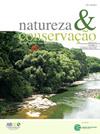Mapping the threat: projecting invasive plant distribution in the tropical Andes under climate change
IF 4
2区 环境科学与生态学
Q1 BIODIVERSITY CONSERVATION
引用次数: 0
Abstract
The high tropical mountains are renowned for their exceptional biodiversity, which plays a pivotal role in sustaining local communities and their economies. Nevertheless, these regions are confronted with considerable challenges, primarily due to the threat of invasive species, which is further compounded by the impacts of climate change. Here, we investigated the current and future distribution of invasive plant species in the tropical Andes, focusing on Páramos – ecosystems that provide essential water services to people. Species distribution modeling was used to assess the current and future suitability of 11 of the most harmful invasive species under low (SSP126), moderate (SSP370), and intense (SSP585) carbon emission scenarios. Our projections show that between 18% and 60% of the tropical mountain area (480,000 km2) is currently suitable for the establishment of at least one species. Additionally, projections indicate that this area could expand by 2–4 % by the mid-century, depending on the climate change scenario. This expansion could potentially make 500–3000 km2 of the Páramo extent suitable for up to five invasive species. Overall, our study provides relevant information for targeted management actions, such as manual removal and restoration, which are essential for limiting the expansion of invasive species to more suitable areas.

绘制威胁:预测气候变化下热带安第斯山脉的入侵植物分布
热带高山以其独特的生物多样性而闻名,这在维持当地社区和经济方面发挥着关键作用。然而,这些地区面临着相当大的挑战,主要是由于入侵物种的威胁,气候变化的影响进一步加剧了这种威胁。在此,我们调查了热带安第斯山脉入侵植物物种的当前和未来分布,重点关注Páramos -为人类提供基本水服务的生态系统。采用物种分布模型对11种最有害的入侵物种在低(SSP126)、中(SSP370)和高(SSP585)碳排放情景下的当前和未来适宜性进行了评估。我们的预测表明,18%到60%的热带山区(48万平方公里)目前适合至少一种物种的生存。此外,预测表明,到本世纪中叶,这一地区可能会扩大2 - 4%,具体取决于气候变化情景。这种扩张可能会使Páramo范围的500-3000平方公里适合多达5种入侵物种。总体而言,我们的研究为有针对性的管理措施提供了相关信息,例如人工清除和恢复,这对于限制入侵物种向更适合的地区扩展至关重要。
本文章由计算机程序翻译,如有差异,请以英文原文为准。
求助全文
约1分钟内获得全文
求助全文
来源期刊

Perspectives in Ecology and Conservation
Environmental Science-Nature and Landscape Conservation
CiteScore
7.80
自引率
4.30%
发文量
46
审稿时长
59 days
期刊介绍:
Perspectives in Ecology and Conservation (PECON) is a scientific journal devoted to improving theoretical and conceptual aspects of conservation science. It has the main purpose of communicating new research and advances to different actors of society, including researchers, conservationists, practitioners, and policymakers. Perspectives in Ecology and Conservation publishes original papers on biodiversity conservation and restoration, on the main drivers affecting native ecosystems, and on nature’s benefits to people and human wellbeing. This scope includes studies on biodiversity patterns, the effects of habitat loss, fragmentation, biological invasion and climate change on biodiversity, conservation genetics, spatial conservation planning, ecosystem management, ecosystem services, sustainability and resilience of socio-ecological systems, conservation policy, among others.
 求助内容:
求助内容: 应助结果提醒方式:
应助结果提醒方式:


